10 Government Funded 4G Mobile Mast Upgrades Go Live in Scotland

Digital Mobile Spectrum Limited (DMSL), which represents the four major UK mobile operators (EE, O2, Vodafone and Three UK), has today confirmed that 10 more government-funded rural 4G (mobile broadband) mast upgrades have just gone live in Scotland as part of the industry-led £1bn Shared Rural Network (SRN) project.
The SRN – supported by £501m of public funding and £532m of private investment from operators – involves both the reciprocal sharing of existing masts in certain areas and the demand-led building and sharing of new masts in others between the operators. The target is to extend geographic 4G coverage (aggregate) to 95% of the UK by the end of 2025 (5G will also benefit from the new infrastructure).
Most of the early work on this project has typically involved private investment from the main mobile network operators, although over the past year or so we’ve also seen government-funded mast upgrades and new site builds taking place in other parts of the country (examples here, here, here, here, here and here). A total of 39 mast upgrades have now gone live across the UK, including the 10 announced today in Scotland.
Advertisement
The latest 10 mast upgrades mean that residents, local businesses and community organisations in areas including Tobermory and Aros on the Isle of Mull can now take advantage of better connectivity, which adds to the coverage enhancements already made to parts of Ayrshire, Dumfries and Galloway, the Borders and Argyll and Bute. The activations bring coverage from all 4 mobile network operators to nearly 200,000m of roads across Scotland.
The work focused on the part of the SRN that sees the government (DSIT) providing a total of £184m from their pot to the Home Office and mobile network operators, which is helping to upgrade Extended Area Service (EAS) masts being built as part of the 4G Emergency Services Network (ESN) – these masts previously only connected EE customers and anyone making 999 calls (all operators can now use them).
Ben Roome, CEO of DMSL, said:
“Since March 2020, when the Shared Rural Network was announced, 4G coverage from all four operators in Scotland has expanded by over 18,000 square kilometres, more than an area the size of Perth and Kinross, Argyll and Bute and the Scottish Borders combined. This programme will continue to improve 4G service for people in rural areas as more shared mobile sites go live.”
Scottish Secretary, Ian Murray, said:
“Powered by UK Government investment, 10 mast upgrades are now providing fast and reliable mobile internet access in rural areas in Scotland. This is a crucial upgrade that will help to improve connectivity – from business to tourism, and particularly to ensure that emergency services can be contacted quickly when they are needed. This is an important step and a key part of our Plan for Change for economic growth right across Scotland.”
Since the SRN programme began in 2020, an additional 34,000 square kilometres – an area equivalent to roughly double the size of Northern Ireland – are now receiving 4G coverage from all four operators across the UK. Through the SRN programme, the UK government and mobile network operators aim to provide 4G coverage to an additional 280,000 premises and 16,000km of the UK’s roads.
Ofcom’s most recent Connected Nations 2024 report revealed that 4G coverage, where it is available from at least one mobile operator, has now reached 95% of the UK’s landmass (delivering early on one of the key targets for the SRN programme), with 4G geographic coverage across individual MNOs in the UK rising from a range of 80-87% last year to 88-89% this year.
Advertisement
Just for some extra context. The SRN includes two key targets. The first involves the delivery of industry funded coverage improvements in Partial Not-Spot (PNS) areas (i.e. areas that receive coverage from at least one operator, but not all), which Ofcom said was hit last year (here).
The second target involves tackling Total Not-Spot (TNS) areas by early 2027. Just to be clear, Ofcom’s licence obligations commit each individual operator to increase its 4G coverage to 88% of the UK’s landmass by June 2024 – rising to 90% by January 2027 – with these individual obligations supporting the overall target of 95% by December 2025.
Mark is a professional technology writer, IT consultant and computer engineer from Dorset (England), he also founded ISPreview in 1999 and enjoys analysing the latest telecoms and broadband developments. Find me on X (Twitter), Mastodon, Facebook, BlueSky, Threads.net and Linkedin.
« Ookla Examine WiFi 6 vs 7 Performance of EE’s UK Broadband Routers





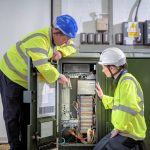





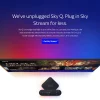



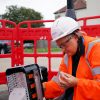


































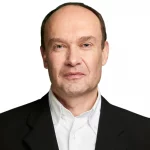
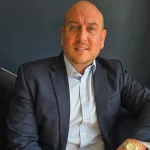



The article mentions ‘Tobermory and Aros on the Isle of Mull’ as areas where these 10 new masts will provide covereage. Is that the only place, or is there more detail available which specifies the areas covered by these 10 masts?
Sadly that’s all the detail we were given.
I don’t get it, why install 15 year old tech, why not 5G?
5G doesn’t travel distances well.
Distance is dictated more by power, antenna design and band choice – it’s less about the ‘Generation’ of mobile technology itself. 5G signals in low bands will go just as far, probably further, than 4G.
The reality here is that the SRN is more about the masts themselves than 4G. They can stick 5G on them later (some kit will already have both); it may also be best to think of today’s 4G as being like yesterday’s 2G. It’ll stick around a lot longer.
Also 4G and 5G technologies evolve, so 4G kit today is much more capable than the first generation hardware. The core standard might be x years old, but the spec and hardware has improved a huge amount through various releases.
have to agree with Mark here, im no expert but i know a bit. 5G is now operating on low frequency bands like N28 which were previous generation frequencies and thus could travel as far easily and that 5G includes things like beamforming and reflection and thus could in theory at least travel as far but due to the constellation patterns provide a higher bit rate.
I do have to wonder if cost plays a factor too, presumably 4G tech is cheaper?
Justin, it depends on the frequencies used. Low bands (B28, B20, B8, etc) has the same reach on 4G and 5G.
In the UK, networks started by deploying 5G on a high band (n78), which are great for speed but not coverage/reach, but that’s not because it’s 5G or 4G, it’s because of the bands being used.
They’re only just starting to upgrade the smart meter network to 4G so I expect it to be around for at least the next 20 years or so, they’re only talking about shutting down 2G in the mid 30’s by which time it will be 40 years old.
@Big Dave Yes indeed. I’ve commented in the past that the longevity of 2G (GSM, GPRS, EDGE) outlasting the various iterations 3G (UMTS, HSPA, HSPA+) is something that many people didn’t expect to see happen.
The fact that they’re so many legacy systems that still depend on 2G cellular technology, its perhaps a blessing in disguise. Had all the 2G systems such as payment systems, alarms and other various cellular dependent equipment been upgraded to 3G systems, they’d have to go through the same process of being replacement all over again now! As Mark mentions, 4G is essentially the new 2G (GSM) fall back and will be around for many years to come.
Fairly clear now that 5G is dead in the water, what a lot of hype and nonsense.
I wonder how much tax payer money was wasted.